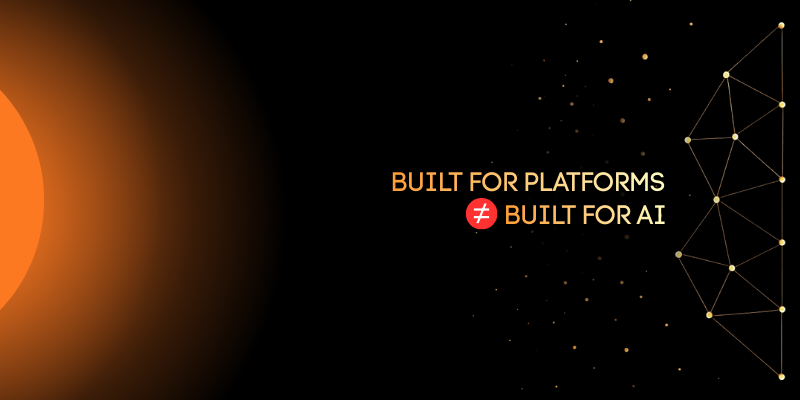
Global talent shortage hit a hit a 17-year high of 77% in 2023, says a Manpower Group report. Sectors such as IT, healthcare, communication services, industrials, and logistics have been hit the hardest, with over 75% of organizations struggling to find adequately skilled candidates for vacant positions. If left unchecked, the shortage will lead to 85 million unfilled positions, translating into $8.5 trillion worth of unrealized annual revenues by 2030. It is no surprise that the talent shortage will become an increasingly complex issue as technology advances and new skills are required to fulfill job roles.
Organizations across the world need to ensure that their talent pools do not dry out as technology advances. Therefore, 71% of them are taking measures to upskill and reskill their existing workforce. But, with the dynamic and evolving culture, strategic planning and execution are critical. This helps ensure that employee growth and learning do not create functional bottlenecks for the organization.
Moreover, the demand to future-proof the workforce is already apparent. The easiest way to achieve this is via a reliable and smart AI-based LMS that eases each step of the upskilling and reskilling journey. The power of AI to help with this journey is apparent from the revolution brought about by ChatGPT and the LLM it is based on. Such innovations demonstrate that AI can be much more than a mere recommendation engine. It can support learners in multiple ways, including providing support, anytime, anywhere.
Here’s a guide to using a powerful LMS to efficiently upskill and reskill employees.
The first step to upskilling is assessing the skill requirements and gaps within the organization. Assessing employees for job-related and cross-functional skill sets and comparing them with the business requirements gives a clear picture of who to train and what to train them on. It helps define and classify content catalogs based on the different verticals and functional pipelines in the company.
It is important to note here that reskilling and upskilling cannot be a one-time effort. The rapid pace of change across sectors makes it important to continuously identify gaps and train people in emerging technologies. Such ongoing learning can make organizations resilient, adapting with agility to changing technology, consumer needs and market trends. Continued learning is also the path to career growth for employees, a crucial benefit that businesses need to provide today to ensure better employee retention. And given that hiring a new candidate can cost up to 5x that of retaining employees, ongoing training can be great for the ROI as well.
Step 2: Define Learning Objectives and Goals
Once the skill gaps, existing competencies, and required skills are clearly defined, organizational and personal learning goals and objectives must be defined. Industry analysis can help clearly specify target timelines to achieve learning outcomes that can be directly translated to the tasks performed by each employee.
Step 3: Create Targeted Learning Paths and Content
Next, based on each employee’s personal career goals, and the organization’s requirements, personalized learner journeys are created. The largest population within the workforce today comprise of Gen Zers and millennials. These generations value opportunities for personal and career growth. A company that provides such opportunities will be better able to retain talent than those that don’t. Leveraging technology to create and manage learning modules, as well as worker enrollment and progress, can accelerate the process. Modern content creation tools, available on the best learning management system, support the creation of modular content that can be assigned to employees individually. This helps ensure that learner effort and time are applied to only focus areas.
Step 4: Foster Continuous Learning and Engagement
Employee and business growth go hand-in-hand. Fostering a culture of continuous growth through learning requires competency hierarchies and access to higher skill level training, both cognitive and industry specific. Adaptive education can facilitate progress at the pace of the employee to ensure they remain engaged.
Some steps that organizations can take in fostering a culture of continuous learning aiding self-learning as well as self-evaluation are:
1. Setting quantifiable learning objectives: Identify areas of improvement and set SMART (measurable, achievable, relevant and time-bound) growth goals.
2. Allocating time for learning: Encouraging people to set aside time for learning can help make learning a part of their weekly or even daily routine.
3. Using online resources: Creating online discussion groups and forums to learn from peers and making learning materials available through a powerful LMS that facilitates self-driven learning.
4. Evaluating progress: Regular evaluation of learning progress can help monitor of upskilling and reskilling efforts and make timely adjustments to achieve the desired outcomes.
Step 5: Track Progress and Evaluate Effectiveness
The final step is evaluation. Using an AI-powered learning management system that provides analytics on individual employee progress and group growth is essential. It enables the company to gain a comprehensive view of gap recovery and insights into the efficacy of the employee training system. This also enables succession planning. It further helps address dynamic industry requirements and build a cyclic upskilling practice to provide the organization an edge over the competition.
Easing Corporate Training with an AI-Based LMS
An AI-driven learning management system can take care of all upskilling and reskilling needs, driving business resilience and growth by leveraging cutting-edge technologies. One of the best qualities of such as learning management system is that it is accessible across platforms and devices while also supporting collaborative learning.
Choosing the right AI-based LMS is the first step to achieving the benefits that continued learning has to offer organizations and their employees.
Recent Blogs

From Disruption to Direction: Finding Focus in a Transforming Industry

AI in Education: 5 Trends Shaping Publishing, Assessment, and Platforms in 2026


